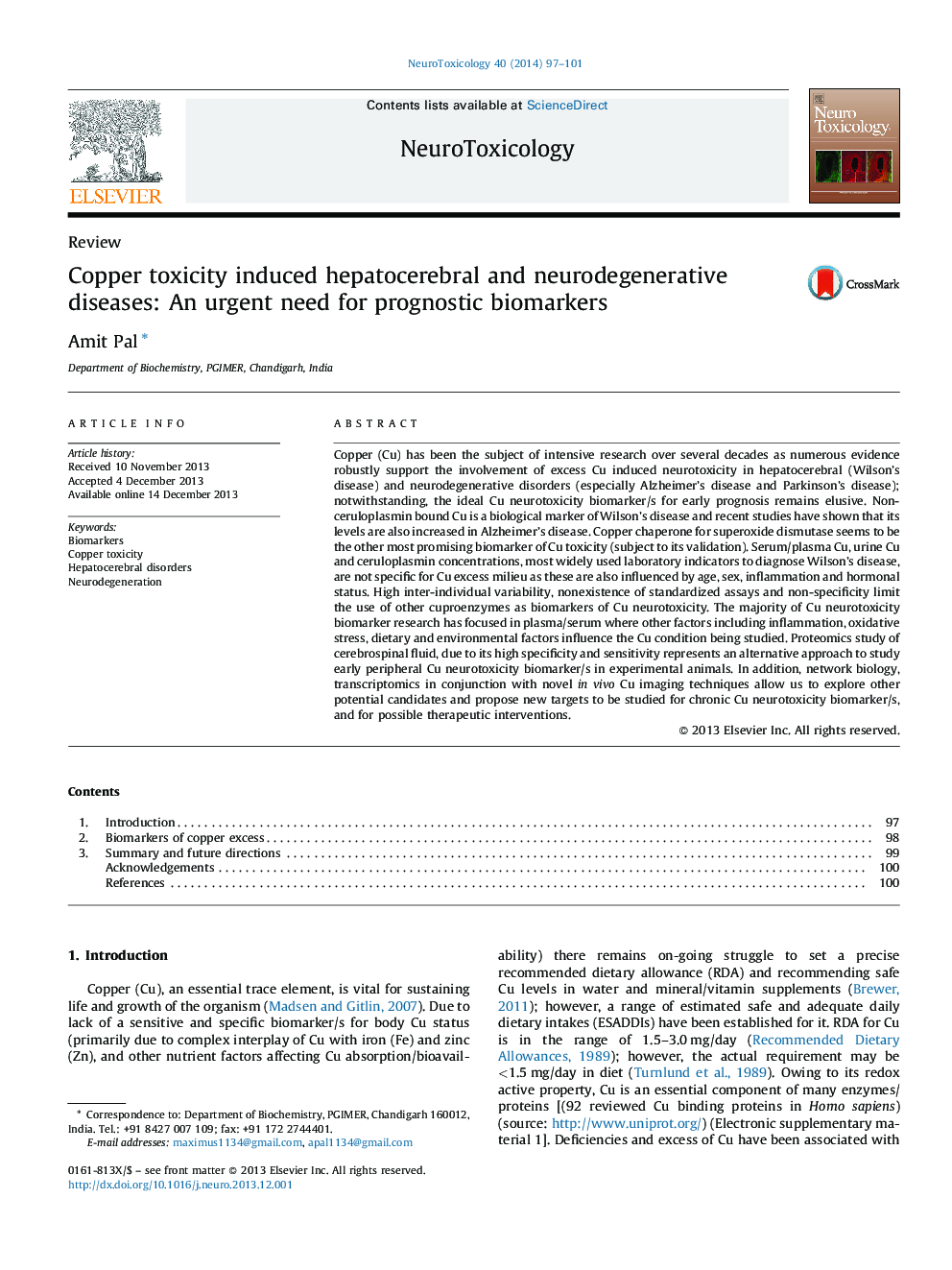| Article ID | Journal | Published Year | Pages | File Type |
|---|---|---|---|---|
| 2589645 | NeuroToxicology | 2014 | 5 Pages |
Copper (Cu) has been the subject of intensive research over several decades as numerous evidence robustly support the involvement of excess Cu induced neurotoxicity in hepatocerebral (Wilson's disease) and neurodegenerative disorders (especially Alzheimer's disease and Parkinson's disease); notwithstanding, the ideal Cu neurotoxicity biomarker/s for early prognosis remains elusive. Non-ceruloplasmin bound Cu is a biological marker of Wilson's disease and recent studies have shown that its levels are also increased in Alzheimer's disease. Copper chaperone for superoxide dismutase seems to be the other most promising biomarker of Cu toxicity (subject to its validation). Serum/plasma Cu, urine Cu and ceruloplasmin concentrations, most widely used laboratory indicators to diagnose Wilson's disease, are not specific for Cu excess milieu as these are also influenced by age, sex, inflammation and hormonal status. High inter-individual variability, nonexistence of standardized assays and non-specificity limit the use of other cuproenzymes as biomarkers of Cu neurotoxicity. The majority of Cu neurotoxicity biomarker research has focused in plasma/serum where other factors including inflammation, oxidative stress, dietary and environmental factors influence the Cu condition being studied. Proteomics study of cerebrospinal fluid, due to its high specificity and sensitivity represents an alternative approach to study early peripheral Cu neurotoxicity biomarker/s in experimental animals. In addition, network biology, transcriptomics in conjunction with novel in vivo Cu imaging techniques allow us to explore other potential candidates and propose new targets to be studied for chronic Cu neurotoxicity biomarker/s, and for possible therapeutic interventions.
